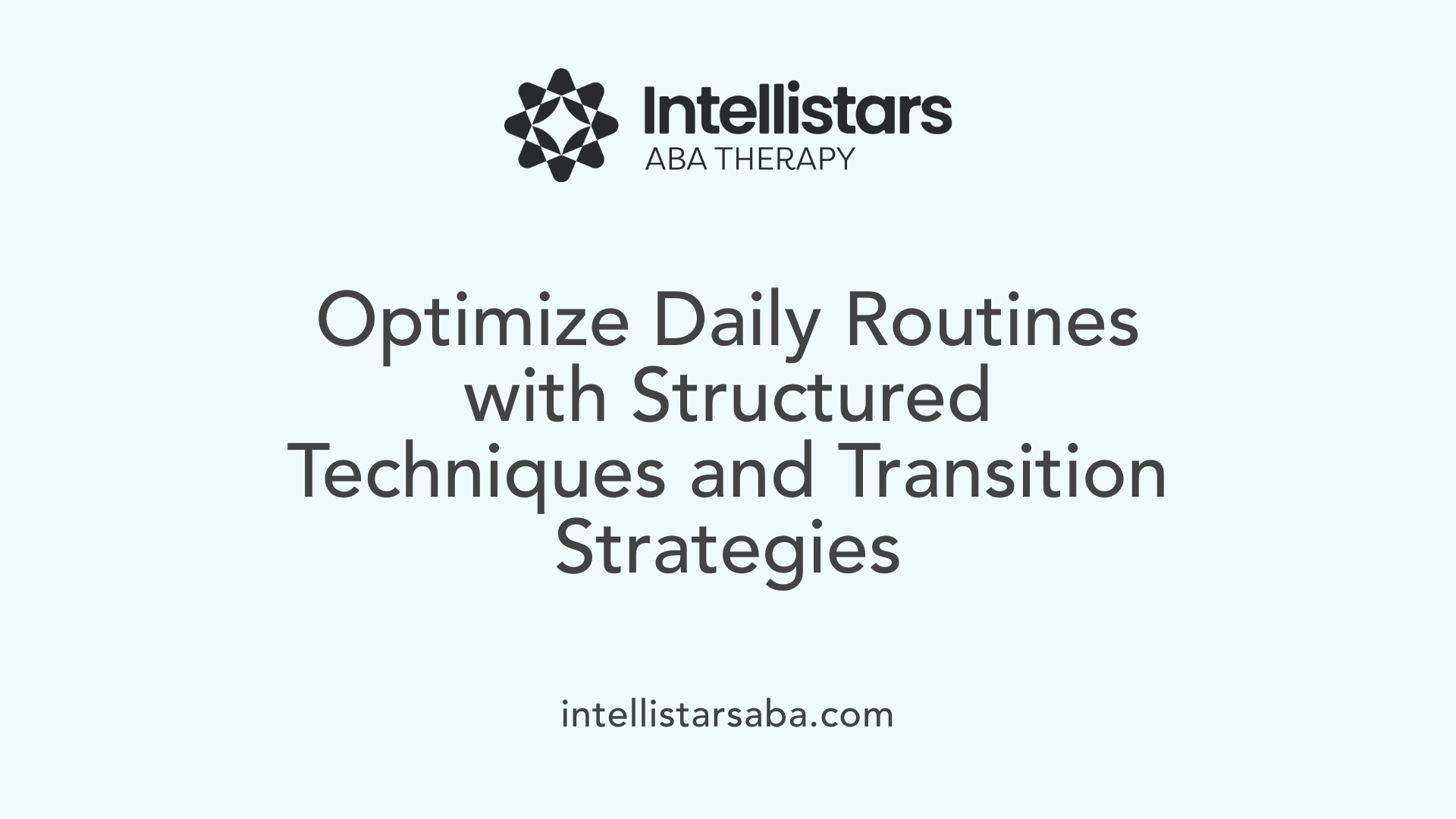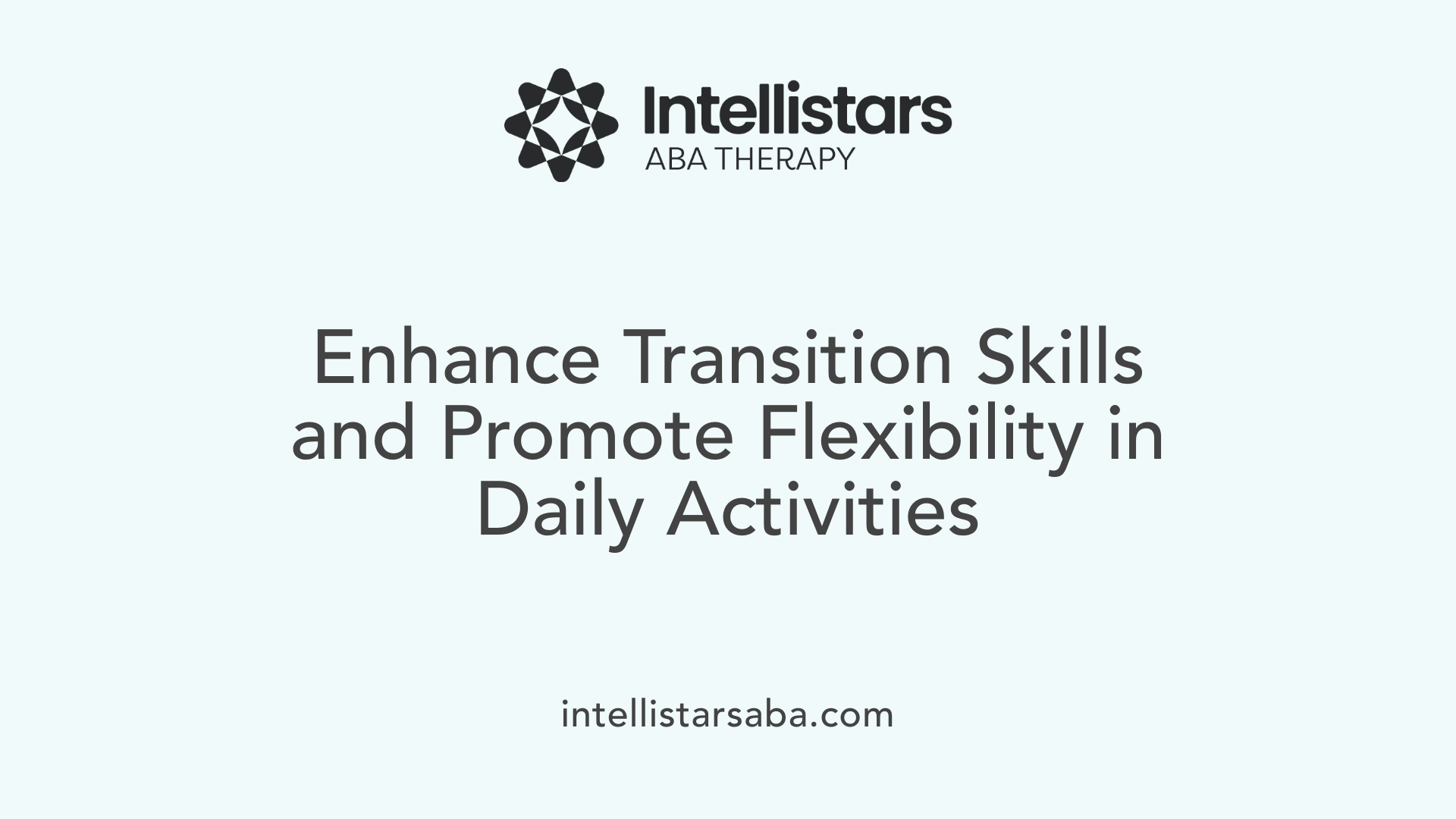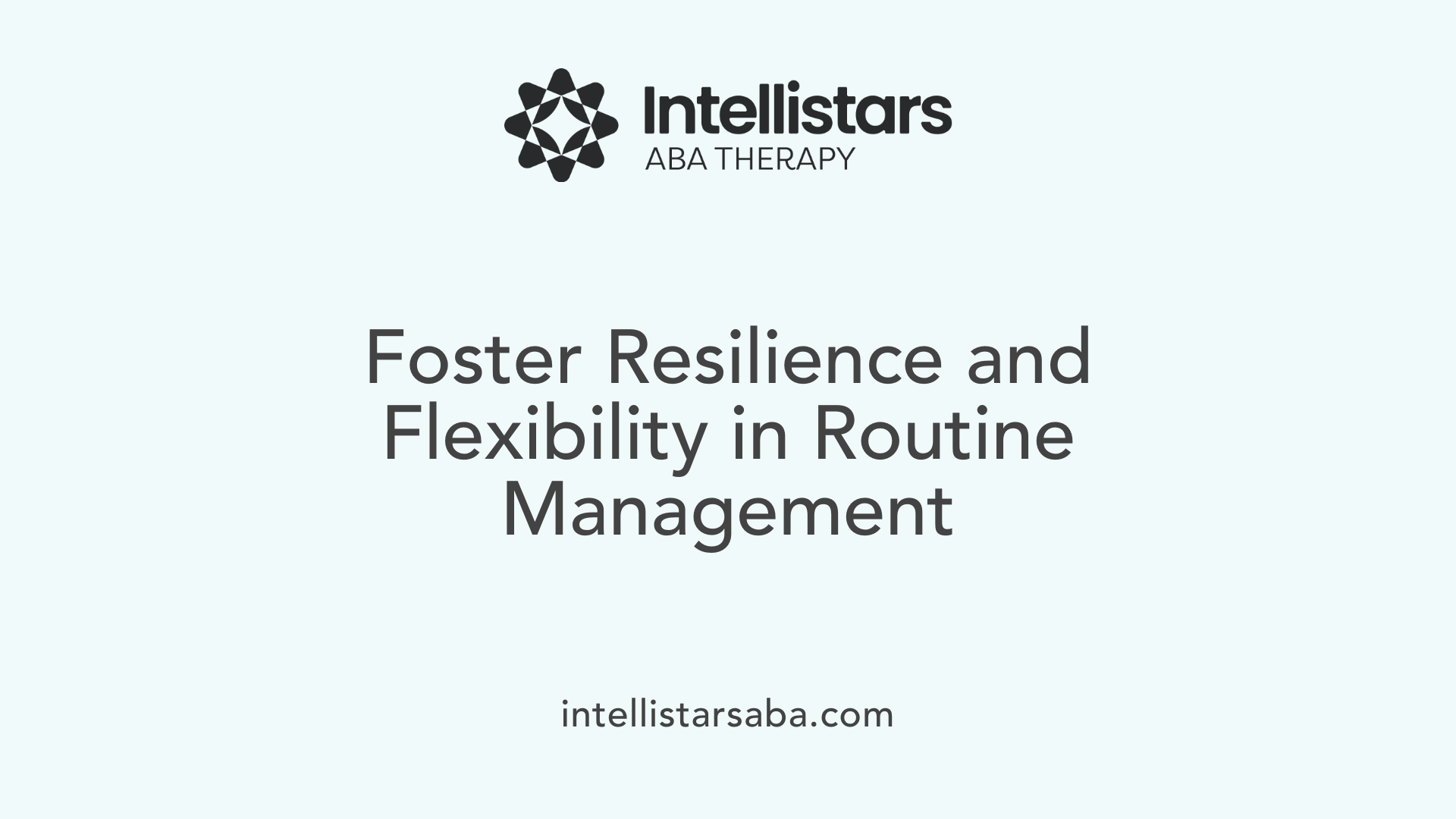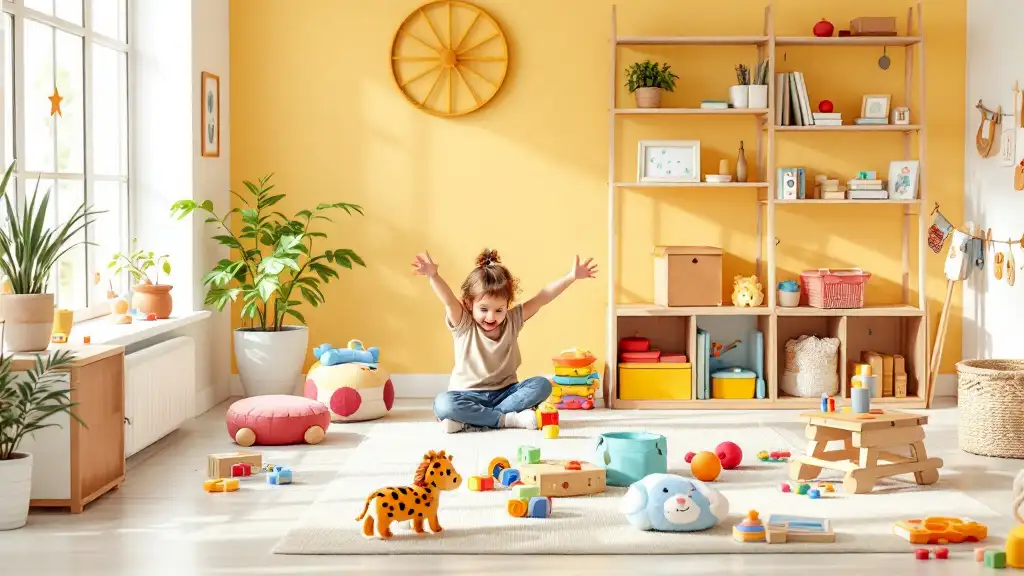Unlocking Daily Living Skills with Evidence-Based Support
Applied Behavior Analysis (ABA) therapy is a proven, evidence-based approach that significantly enhances self-care and daily routines for children with autism. By employing tailored strategies and structured routines, ABA facilitates the acquisition and generalization of essential life skills, fostering independence and boosting confidence. This article explores how ABA therapy helps individuals develop self-care habits, manage daily routines effectively, and ultimately lead more empowered lives.
Core Strategies in ABA for Daily Routine Improvement
How can ABA therapy help improve self-care and daily routines?
ABA therapy significantly enhances self-care and daily routines by teaching individuals these skills through structured methods like task analysis. This involves breaking down complex routines into smaller, manageable steps, making learning more accessible. Therapists incorporate visual supports such as schedules and picture cues that help children understand what to do next, reducing confusion and anxiety.
Positive reinforcement plays a big role, motivating children to continue practicing routines. Rewards like praise or tokens encourage successful completion of tasks such as dressing, grooming, and hygiene. Prompts, which are hints or cues provided initially, are gradually faded out as the child becomes more independent.
Visual schedules and consistent routines not only help in learning daily tasks but also promote safety, social interactions, and community engagement. Overall, ABA therapy fosters lasting independence, boosting self-confidence and improving the child's quality of life.
Implementing Structured Routines and Transition Strategies

How can ABA therapy help improve self-care and daily routines?
ABA therapy plays a significant role in helping children and individuals with autism develop strong self-care and daily routines. It does so by teaching these skills through a variety of structured techniques such as task analysis, which breaks complex tasks into manageable steps. Visual supports like schedules, charts, and checklists are integral to this process, providing clear and predictable cues that help individuals understand what to expect next.
Using positive reinforcement—rewarding success with praise, tokens, or preferred activities—motivates learners to complete routines consistently. Prompting and prompt fading techniques are also employed to guide learners initially, then gradually encourage independence as they become more confident in performing daily tasks.
In addition, ABA therapy emphasizes routine consistency across different environments like home, school, and community settings. This consistency fosters confidence, minimizes anxiety, and promotes skill transfer, enabling successful participation in activities such as dressing, grooming, eating, and safety procedures. Ultimately, ABA supports the development of autonomy in managing everyday routines, elevating individuals' quality of life.
What are the benefits of ABA therapy in promoting self-care and daily routine management?
The benefits of ABA therapy extend broadly in enhancing self-care and routine management skills. Through tailored interventions, children learn to perform activities like brushing their teeth, dressing, and toileting independently. Techniques such as task analysis simplify routines into step-by-step actions, making them less daunting and more attainable.
Visual aids like schedules and picture cues help children anticipate upcoming tasks and transition smoothly between activities, reducing stress and behavioral challenges. The use of positive reinforcement boosts motivation by highlighting successes and encouraging ongoing effort.
Furthermore, ABA helps children generalize these learned skills to different settings, ensuring consistency and greater independence across various environments. This comprehensive approach leads to improved daily functioning, higher self-confidence, and a more active participation in everyday life.
How does ABA therapy promote independence in managing daily routines?
ABA therapy fosters independence by teaching individuals how to perform daily routines effectively and reliably. It employs detailed methods such as task analysis to divide routines—for example, getting dressed or preparing a snack—into smaller, achievable steps.
Visual supports like schedules, checklists, and picture cues serve as visual reminders and anticipatory guides, helping children understand what is expected and reducing uncertainty.
Positive reinforcement is used generously to reward autonomous task completion, motivating children to practice skills independently. Additionally, ABA strategies include role-playing and practice in real-world settings, which help generalize skills from therapy to everyday life.
By training families and caregivers, ABA ensures that these skills are consistently reinforced outside of structured sessions, nurturing long-term independence in managing daily activities.
What techniques are used in ABA therapy to support independence in daily activities?
Key techniques in ABA therapy designed to support independence include:
| Technique | Description | Purpose |
|---|---|---|
| Task Analysis | Breaking complex routines into smaller steps | Facilitates step-by-step learning |
| Visual Supports | Use of schedules, picture cues, and checklists | Enhances understanding and transitions |
| Positive Reinforcement | Rewards like praise or tokens | Motivates consistent performance |
| Prompting & Fading | Guidance initially, then gradual independence | Builds confidence with gradual withdrawal of prompts |
| Real-world Practice | Applying skills in natural settings | Ensures skill generalization |
| Family Involvement | Training caregivers to reinforce skills | Ensures consistency and maintenance |
These approaches are highly individualized, focusing on each learner's needs, and paired with ongoing data collection to track progress.
Are there educational resources that explain how ABA therapy can improve self-care and daily routines?
Yes, a wealth of educational materials exists to help parents, educators, and practitioners understand how ABA supports self-care and daily routines. Notable resources include books, online courses, and reputable websites from organizations like the Behavior Analyst Certification Board (BACB) and recognized therapy providers.
These materials detail the core ABA techniques—such as task analysis, prompting, visual supports, and reinforcement—and how they are applied to teach essential skills like hygiene, dressing, and meal preparation. Many resources incorporate videos demonstrating successful strategies, along with downloadable templates and guides.
Webinars, articles, and professional publications regularly update practitioners and families about best practices. Overall, these educational tools promote an understanding of how ABA's structured, evidence-based methods foster independence, improve daily functioning, and enhance overall quality of life for individuals with autism.
Enhancing Behavior Management and Emotional Regulation
How can ABA therapy help improve self-care and daily routines?
ABA therapy plays a vital role in teaching children with autism essential self-care and daily routine skills. Through step-by-step methods like task analysis, therapists break down complex activities—such as dressing, brushing teeth, or preparing snacks—into manageable parts.
Visual supports like schedules, checklists, and picture cues are prominently used to help children understand what comes next. Reinforcement strategies—such as praising achievements or offering rewards—motivate children to practice routines repeatedly. Over time, prompts used during learning are gradually faded, promoting greater independence.
Routine structures and visual cues aid children in managing household chores, safety skills, and community interactions. The overall goal is to foster independence, reduce anxiety around daily tasks, and boost confidence, leading to a better quality of life.
What are the benefits of ABA therapy in promoting self-care and daily routine management?
The benefits of ABA therapy extend to improved self-care and daily routines. Through individualized interventions, children learn to perform everyday activities independently. Techniques like task analysis make routines more approachable, and visual supports help anticipate upcoming tasks, reducing feelings of being overwhelmed.
Positive reinforcement encourages children to consistently engage in routines such as dressing, feeding, or toileting. These skills are reinforced across various environments, supporting their generalization. As a result, children develop not only the skills but also the confidence to manage daily activities successfully, which significantly enhances their autonomy and quality of life.
How does ABA therapy promote independence in managing daily routines?
ABA helps children attain independence by teaching them how to execute daily routines effectively. This is achieved through breaking routines into smaller, manageable steps with methods such as task analysis and providing visual supports like schedules and picture cues.
Reinforcement—through praise or tangible rewards—encourages consistent practice and mastery of skills. Strategies for managing transitions, such as using transition warnings and flexible routines, further support skill generalization across settings. Engaging families in the process ensures that learned skills are reinforced at home and in the community, promoting stability and independence.
What techniques are used in ABA therapy to support independence in daily activities?
Several targeted techniques are employed within ABA to foster independence. Task analysis decomposes complex routines, making learning clearer and less overwhelming. Visual supports—like picture charts or first/then boards—help children understand what to do next.
Positive reinforcement motivates children to complete routines and learn new skills. Prompting—such as verbal, gestural, or physical cues—guides initial independence, while prompt fading ensures skills are retained without ongoing prompts.
Practicing skills in real-world settings and involving caregivers also ensures that children can apply what they learn in day-to-day situations. These individualized interventions consistently focus on building confidence and independence.
Are there educational resources that explain how ABA therapy can improve self-care and daily routines?
Yes, a variety of educational resources are available that detail how ABA therapy enhances self-care and daily routines. Reputable organizations like the Behavior Analyst Certification Board and leading therapy providers offer books, online courses, and detailed websites.
These resources explain ABA techniques such as task analysis, prompting, and reinforcement, illustrating how they can be applied to teach personal hygiene, dressing, and feeding skills. Many include videos, webinars, and articles that demonstrate successful strategies and real-life examples.
Parents, caregivers, and educators are encouraged to explore these materials to better understand how ABA can support children in developing independence in their daily living routines, ultimately fostering greater confidence and participation in everyday life.
| Aspect | Description | Supporting Tools |
|---|---|---|
| Techniques | Task analysis, prompting, reinforcement, visual supports, transition strategies | Picture cues, checklists, visual schedules, first/then boards |
| Goals | Promote independence, reduce anxiety, manage transitions | Reinforcement systems, data collection, prompting methods |
| Settings | Home, school, community | Consistent routines, caregiver involvement, structured environment |
| Benefits | Increased independence, better emotional regulation, improved social skills | Family training, reinforcement strategies, visual aids |
Developing Skills for Transition and Flexibility

How can ABA therapy help improve self-care and daily routines?
ABA therapy significantly enhances self-care and daily routines by teaching specific skills through a structured approach. It uses techniques such as task analysis, positive reinforcement, prompting, and visual supports to help children learn routine activities like dressing, grooming, eating, and hygiene. These skills are reinforced gradually, with prompts fading out to foster independence. Visual schedules and consistent routines support children in managing household tasks, safety skills, and community interactions more effectively. This comprehensive approach encourages lasting independence, boosting confidence and overall quality of life.
What are the benefits of ABA therapy in promoting self-care and daily routine management?
ABA therapy offers multiple benefits by helping children with autism develop independence in managing daily activities. It simplifies routines through individualized interventions that employ task analysis, visual supports, and positive reinforcement. Children gain confidence and reduce anxiety as they learn to perform tasks like toileting, dressing, and meal preparation step-by-step. The therapy also helps generalize these skills across different environments, leading to smoother daily functioning. Overall, ABA enhances a child's ability to handle routines confidently, enabling increased participation and a better quality of life.
How does ABA therapy promote independence in managing daily routines?
Promoting independence is a core objective of ABA therapy. It teaches functional skills by breaking routines into manageable steps using task analysis. Visual supports such as schedules, charts, and picture cues prepare children to anticipate and understand their daily activities. Positive reinforcement boosts motivation, encouraging children to practice and master these skills on their own. Addressing challenging behaviors and teaching effective responses to transitions further aids independence. Involving families ensures these skills are reinforced across settings, fostering long-term autonomy in managing daily routines.
What techniques are used in ABA therapy to support independence in daily activities?
ABA employs several techniques to foster independence in daily tasks. Task analysis decomposes routines into small, achievable steps. Visual supports like schedules and picture cues help children understand what’s expected and prepare for transitions. Positive reinforcement, such as praise or tangible rewards, motivates children to perform routines independently. Prompting initially guides actions, with prompts gradually faded to encourage self-reliance. Practicing skills in real-life settings and involving caregivers is essential for generalization. These individualized interventions focus on teaching essential life skills, promoting self-regulation, and building confidence.
Supporting flexibility and successful transitions
When working with children with autism, supporting their ability to adapt routines is essential for their development and well-being. ABA therapy teaches children to adjust to routine changes gradually, helping them become more resilient and flexible.
One effective method is incorporating problem-solving activities that simulate potential changes, allowing children to practice responding flexibly within a safe environment. These activities help children develop coping skills and reduce frustration when routines shift unexpectedly.
Implementing visual supports, such as modified schedules and transition cues, helps children anticipate changes and understand new sequences. This consistency across routines and the use of visual aids ease anxiety and promote smoother adjustments.
To further support resilience, ABA therapists often use transition strategies that balance structure with flexibility. For example, gradually increasing the complexity of activities or introducing small delays can help children adapt without feeling overwhelmed.
Parents can also support this process at home by preparing children for upcoming changes, using visual supports, and practicing new routines in a step-by-step manner. This collaborative effort builds confidence and encourages children to navigate unpredictability with greater ease.
How can ABA therapy help children adapt routines with gradual adjustments?
ABA therapy supports children in adapting routines by teaching how to accept gradual changes. Through stepwise adjustments, therapists help children become comfortable with new sequences or modifications in their routines. For instance, slowly introducing new steps in a daily activity or extending transition time can prevent anxiety.
Problem-solving activities, embedded in therapy sessions, enable children to learn coping strategies and develop flexibility. Visual schedules can be modified, and the child is guided through the adjustments with clear cues and prompts.
Parents are encouraged to mimic these gradual changes at home, reinforcing the child's learning and confidence. Over time, children develop resilience and are better prepared to handle unexpected variations comfortably.
Using problem-solving activities to handle routine changes
Problem-solving activities are an integral part of teaching flexibility. These activities typically involve scenarios where routines are slightly altered, and children are guided to find solutions or adapt their behavior accordingly.
For example, a child might practice finding alternative ways to complete a task when faced with a new obstacle or change. This encourages critical thinking and adaptability.
Such exercises can be scheduled regularly, gradually increasing in complexity. The goal is to help children develop skills that enable them to manage unpredictable situations confidently.
Balancing structure with flexibility to reduce frustration
Balancing a predictable routine with flexibility minimizes stress and frustration. ABA professionals achieve this by establishing consistent routines using visual supports, then gradually introducing small variations.
This approach ensures children feel secure with familiar activities while exploring how to manage changes. Techniques like social stories, visual cues, and gradual routine modifications are employed.
Parents and caregivers are vital in maintaining this balance, reinforcing adaptive behaviors, and providing reassurance during transitions.
Implementing visual supports for smooth transitions
Visual supports play a crucial role in aiding transitions. These include visual schedules, checklists, first/then boards, and transition cues.
They help children understand upcoming changes, reduce uncertainty, and promote compliance. For example, a visual schedule can show the sequence of activities, alerting the child to what comes next.
Using visual supports consistently across environments—home, school, and community—ensures familiarity and fosters independence. These tools empower children to participate actively in routines and navigate changes with less stress.
Building Resilience and Adaptability in Routine Management

Teaching children to adapt routines with gradual changes
In ABA therapy, teaching children how to adapt to routine changes is essential for fostering resilience and reducing anxiety. Therapists often introduce small modifications gradually, allowing children to adjust at a comfortable pace. For example, shifting the timing of a daily activity or changing the place where it occurs helps build flexibility. Visual supports, like updated schedules or transition cues, guide children through these modifications smoothly.
Using problem-solving activities to handle unexpected routine disruptions
Unexpected disruptions can be challenging for children with autism. ABA uses problem-solving activities to help children develop coping skills and flexibility. When routines are interrupted, therapists guide children to identify the problem, consider alternatives, and choose appropriate responses. These activities promote adaptability, encouraging children to handle changes calmly without developing resistance or distress.
Supporting resilience and flexibility to reduce anxiety and resistance
Resilience is strengthened by consistent practice and positive experiences with routine adjustments. ABA strategies incorporate reinforcement of calm and flexible behavior, reducing anxiety associated with change. By gradually exposing children to new routines or modifications, and rewarding their successful adaptation, ABA builds resilience, helping children become more comfortable with variability.
Strategies for balancing routine structure with flexibility
Balancing structured routines with flexibility involves blending predictability with room for unexpected variations. ABA therapists often design routines with built-in transition times and optional steps. They use visual supports and choice-making opportunities to give children a sense of control. Transition strategies like countdowns or visual cues prepare children for upcoming changes, enabling smoother shifts between activities.
Implementing visual supports to ease routine modifications
Visual supports such as visual schedules, first/then boards, or checklists are vital tools for easing routine modifications. These visuals display upcoming activities or changes clearly, helping children anticipate and understand adjustments. Consistent use of visual supports across home and therapy settings reinforces understanding, reduces anxiety, and enhances the child’s ability to modify routines independently.
How ABA therapy helps improve self-care and daily routines?
ABA therapy significantly boosts self-care skills by teaching children specific routines like dressing, grooming, and hygiene through structured methods. Tasks are broken into smaller steps, reinforced with prompts and rewards, and gradually made independent by fading supports. Visual schedules and consistent routines help children manage tasks confidently, ensuring safety and independence.
What are the benefits of ABA therapy in promoting self-care and daily routine management?
ABA intervention fosters independence by teaching children to handle daily routines confidently. It reduces anxiety and increases confidence via visual aids and reinforcement. Over time, children generalize skills across environments, leading to better self-management, improved quality of life, and greater social engagement.
How does ABA therapy promote independence in managing daily routines?
ABA promotes independence by teaching functional routines through task analysis, visual cues, and positive reinforcement. These strategies help children understand what to do, anticipate upcoming steps, and perform tasks with minimal assistance. Family involvement ensures that skills are practiced across settings, supporting long-term independence.
Enhancing Daily Living with ABA Support
ABA therapy provides a comprehensive framework for developing and reinforcing self-care and daily routines in children with autism. Through tailored techniques like task analysis, visual supports, reinforcement, and transition strategies, ABA supports children in becoming more independent, confident, and resilient. The involvement of families and caregivers ensures consistency across environments, promoting sustained progress. Whether addressing hygiene, dressing, or managing transitions, ABA empowers children to lead more autonomous, fulfilling lives, ultimately improving their quality of life and their ability to participate fully in daily activities.
References
- How ABA Therapy Creates Healthy Habits
- The Role of Routine in ABA Therapy: Helping Children Thrive
- What a Typical Day in ABA Therapy Looks Like
- What is ABA Therapy And How Does It Work
- ABA Therapy: How Routines Improve Morning & Bedtime
- Applied Behavior Analysis (ABA)
- Self-Care Skills for Kids with Autism Made Simple: A Guide
- Boosting Independence: Self-Care and Daily Living Skills ...
- How ABA Therapy Builds Self-Care & Independent Living ...
- Boosting Independence: Self-Care and Daily Living Skills ...






